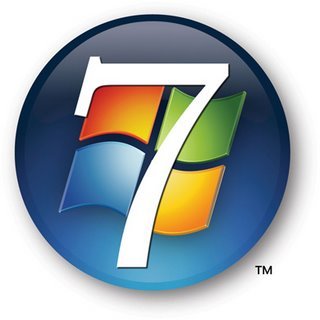Microsoft Watching OEM Bloatware for Windows 7
Microsoft’s keeping an eye on the amount of bloat that OEMs will be loading into Windows 7.
We all love to build our own PCs and besides the cost savings, we like the feeling of having a virgin install of an operating system rather than one that’s been “customized” with bloatware. We’ve seen it all before on our laptops, when Windows starts up and the system tray fills with things we never wanted in the first place.
If Microsoft (along with the rest of us) have its way with Windows 7, useless and slow startup programs will be kept at bay from pre-installs.
“We're all about putting the stopwatch on how quickly a customer gets to a usable experience,” said Mark Croft, the director of Microsoft’s OEM worldwide marketing, in a TechRadar story. “With OEM pre-installed software what you'll see is a little bit of streamlining going on in the initial experience for the customer.”
While speed and responsiveness should always near the top of every operating system’s development goals, Microsoft is more sensitive than ever to how quick Windows 7 will feel.
After Windows Vista earned the reputation for being slower than Windows XP, largely due to increased security and other forward-looking features, many became frustrated with their overall computing experience. Users just saw Windows Vista as downgrade to XP rather than an upgrade.
Microsoft now is putting efforts into making Windows 7 much faster, working with OEMs to reduce bloat, and even smaller things such as improving the response of the Start Menu button.
Get Tom's Hardware's best news and in-depth reviews, straight to your inbox.
-
waikano Now all you need to do is get rid of that nasty marketing scheme you are planning to push on us and we will all be happy.....6-7 SKUs......FAIL!!Reply -
ptroen This could be a move just to ensure that the bloatware installed is MS bloatware. Unless MS puts more specifics this is more of a marketing tactic then anything else.Reply -
woah, not microsofts place to tell OEM whta to do with the licences they and systems they build,if the manufacturer decides to add extra applications then they should do so, its up to the end user to decide which ones to keep, a lot of the bloatware is annoying but it is better deciding what you want to keep for free than never being given anything for free!Reply
-
eddieroolz moriconwoah, not microsofts place to tell OEM whta to do with the licences they and systems they build,if the manufacturer decides to add extra applications then they should do so, its up to the end user to decide which ones to keep, a lot of the bloatware is annoying but it is better deciding what you want to keep for free than never being given anything for free!Reply
You never get it free. You pay it in terms of speed and experience. -
captaincharisma no half to all of that useless software they put on there is trialware so while the software does have a use that use will be useless after a certian number of days. wish the OEMs allowed an option for us to install the OS ourselves. send me the pc with nothing on it and a copy of the OS and let me install it myself is all I wnatReply -
thedipper moriconwoah, not microsofts place to tell OEM whta to do with the licences they and systems they build,if the manufacturer decides to add extra applications then they should do so, its up to the end user to decide which ones to keep, a lot of the bloatware is annoying but it is better deciding what you want to keep for free than never being given anything for free!Reply
It's VERY MUCH microsoft's place.
OEMs loading overly slow bloatware onto a PC with Windows 7 means that unexperienced users, likely most of the market, are going to have bad experiences with Windows. Again. -
How about all that other crap that gets loaded after you install the OS? I can think of Java Updater, Adobe Updater, QuickTime and all sorts of other crap!Reply
-
mpasternak how many peple (typical users, not us) buy computers and think that "windows sucks, it's slow and takes forever to start" on brand new hardware?Reply
many i know of. Usually because of bloatware. Just recently got to test out an XPS system. Fresh from Dell. Vista took nearly 5 minutes to load. the user thought it was broken when he got it,
Fresh install of vista later. the machine was quite fast and the user very very happy.

